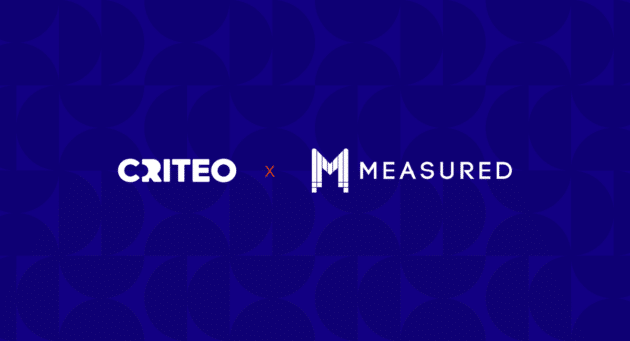This article originally appeared on Oracle Data Cloud’s blog on December 14, 2020.
As we head into another year of change and uncharted territory, adtech industry stakeholders are working together to find new solutions for privacy as they embrace an increasingly consumer-centric environment.
To speak more about how Criteo is doing their part to engage in broad industry collaboration, we reached out to Len Ostroff, the SVP of Global Partnerships and Alliances. Len shared his unique perspective about how competitors have already started coming together to solve challenging issues around changing regulations and the future of identity.
Read on to see why Len agrees that the shifting landscape will act as an ecosystem reset, and also learn his thoughts on the evolution of brand safety and what else is on the horizon for 2021.
Oracle: The advertising industry faces many changes as a result of the impending deprecation of 3rd party cookies on Chrome, similar to Safari and Firefox, as well as opt-in changes for Apple’s mobile advertising ID, IDFA. What trends have you been seeing as advertisers are adjusting and future-proofing their strategies?
Len: As we move toward a world without 3rd party cookies, we see many publishers building up their 1st party data, obtained with consent from direct relationships with their customers. This data holds targeting opportunities for advertisers while ensuring that consumers have opted in and are aware that they’re going to receive personalized advertising. This level of consumer consent is critical in a world with evolving privacy regulations—and 1st party data allows consumers to willingly provide their consent.
We’ve also seen growing industry collaboration, as advertising players work toward new solutions for privacy. Our partnership is an example of this, but we’ve also seen other companies working together to provide publishers with solutions that will continue to sustain their businesses. Direct connections to publishers and deep 1st party integrations are critical as we look to rebuild consumer trust within the advertising value exchange.
Oracle: How have these industry changes enabled all players in the digital advertising ecosystem to hit the reset button?
Len: This reset has given us a chance to step back and envision what all constituents want and need from digital advertising. This will require broad industry collaboration. Building on your first question, in the past few months alone we’ve seen more and more industry players come together—many of whom have historically competed with each other—to solve these challenging issues. For instance, Google is engaging with and listening to feedback from adtech players—even recently including several points from Criteo’s industry proposal, SPARROW, into their DOVEKEY proposal. We’ve also recently collaborated with The Trade Desk on a Unified ID 2.0 initiative. Solving challenges around privacy and identity requires innovative partnerships to truly promote change and develop a consumer-centric solution.
Oracle: Criteo’s mission is “powering the world’s marketers with trusted and impactful advertising.” What advice do you give your partners as they navigate this changing landscape? What can they do to prepare or refine their approach to connect with their audiences?
Len: Our mission is to ensure that we care for people’s privacy while making every advertisement useful to the consumer it reaches by understanding every buyer’s journey. While the ways we understand those journeys may be changing, we’ll likely see a mix of scenarios and identities that will inter-operate—including user-level advertising through 1st party data, interest-group advertising based on people with shared similar interests, and contextual advertising that does not rely on 3rd party identifiers.
Privacy and identity are critical issues that affect the broader ecosystem, and we’re actively embracing and addressing them as an integral part of our strategy. To help maximize return on ad spend for marketers and drive better monetization of ad space for retailers and publishers across the open internet, the industry will need to move beyond 3rd party identifiers. That’s why we work with partners to help expand our 1st party data footprint to better support all types of scenarios related to personalized advertising. We also recommend leveraging AI and machine learning to activate this data for dynamic creative optimization, predictive bidding, and product recommendations to ensure the greatest impact of each ad.
Oracle: Brand safety continues to be a hot topic, especially as it relates to the suitability of media for each brand. What is Criteo’s perspective on this?
Len: Advertisers are increasingly concerned over where their ads appear, and alongside which topics, so they’re leaning into solutions that give them more control over brand safety. Criteo is committed to delivering a safe and transparent advertising experience for brands and publishers alike. That’s why we regularly review our relationships with our supply partners and are constantly working to ensure that we display ads on sites that adhere to our content guidelines. We also have processes in place that allow advertisers to prevent their ads from displaying on sites that they deem unsuitable for their brands.
Our new partnership with Oracle Data Cloud brings semantic detection power to Criteo’s global brand-safety offering, using adaptive machine learning technology to evaluate keywords on web pages so that advertisers can avoid associating their brands with negative content and keywords. Thanks to Oracle’s Contextual Intelligence technology, we can provide a more granular, global brand-safety solution that also helps publishers maximize their revenue opportunities by ensuring that their inventory isn’t blocked due to overly broad controls. We also offer additional options to respond to the specific brand-suitability requirements of our clients while continuing to provide scale and performance to their advertising campaigns.
Oracle: In what ways will Criteo and Oracle Data Cloud’s collaboration help advertisers reach their consumers in relevant environments without sacrificing scale?
Len: In the past, we’ve seen that brand safety and reach do not always go hand in hand. For example, blocking out the keyword “covid19” could result in cutting down nearly 50% of available media content. Advertisers now benefit from Oracle Data Cloud’s ability to fully understand the context of every page, which goes well beyond traditional keyword blocking. When this capability is combined with Criteo’s extensive publisher reach across 5,000 premium direct publishers and SSP relationships, as well as our identity graph capabilities, the partnership maximizes both brand safety and unparalleled reach.
Oracle: Looking ahead, what’s next on the horizon that you’re excited about?
Len: It will be exciting to see which proposed industry solutions for privacy and identity begin to take shape in tangible and actionable ways. In many ways, 2020 was a year for adaptation, and that included developing proposals to move the industry forward. We now need to see those solutions come to life through testing by advertisers and publishers in existing environments that don’t allow for 3rd party cookies. This will disrupt the industry, as advertisers are typically presented with final “fully baked” solutions to adopt (or not), but now they’ll need to be part of the testing ground for these solutions. While this is uncharted territory to some extent, it’s exciting to see industry players collaborate in new ways, and I think we’ll see some tremendous advancements because of it.
For more information on our partnership with Oracle Data Cloud, read our full press release, here.





















